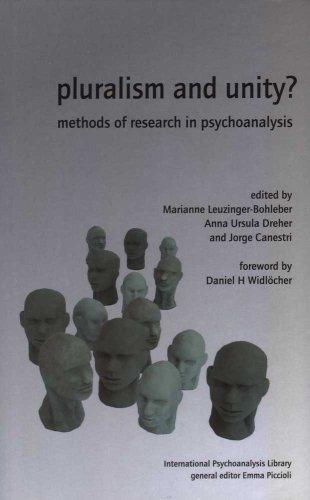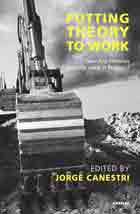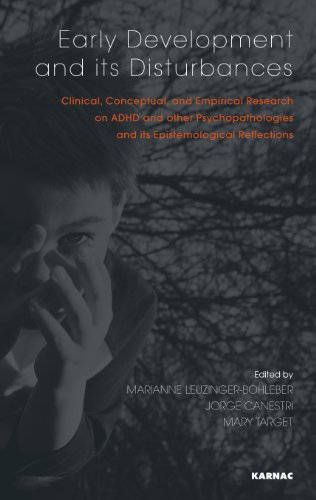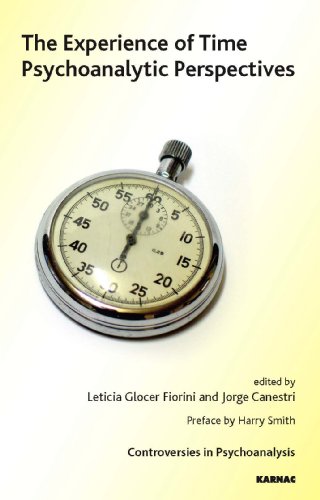Language, Symbolization and Psychosis
The title of this book, in which a group of eminent psychoanalysts express their friendship to Jacqueline Amati Mehler and at the same time pay tribute to her contributions to psychoanalysis, clearly indicates its subject matter. From different points of view and using different theoretic formulations, its chapters explore a fascinating and problematic area of psychoanalytic knowledge - the relationships between symbolization and serious pathologies - including the role that speech and the different languages play in psychoanalysis, the 'talking cure' par excellence, and how they are used in the cure. All these themes have been the object of Jacqueline Amati Mehler's attention and of her papers during the many years of work that she has dedicated to our discipline.
Symbolism, as we know, is one of the great themes confronted by Freud, from The Interpretation of Dreams until his final works. His contribution is determinant, even in the eyes of those who do not agree with some of his hypotheses. Many disciplines have taken an interest in "symbolic facts" including semantics, logic, rhetoric, hermeneutics, aesthetics, philosophy, ethnology, psychoanalysis, poetics; and probably none of them can claim to have fully deciphered this specific activity of the human being. A reasonable position could be to study the various ways of understanding and defining the "symbolic facts" and the modalities through which the individual succeeds (or does not succeed or only partly succeeds) in symbolizing.
A certain discrimination of the elements in play when we speak about symbolism could be useful in order to limit the field. The three terms 'symbol', 'symbolism' and 'symbolization' frequently appear on the scene. The first (and indeed the others) is defined differently according to the discipline involved. Semiotics, for example, suggests a definition of symbol - and here again, it varies according to the semiotic theory chosen - that is not the same as that deriving from psychoanalytic research. In both The Interpretation of Dreams and in Introductory Lectures on Psychoanalysis, Freud hypothesizes that the symbol depends on an unconscious shared universal knowledge limited to a few elements. His disciple Ernest Jones (1916), as we know, wrote a paper that, even though it is controversial, is considered by many to be one of the milestones in the psychoanalytic theory of symbolism. In it Jones emphasizes certain rigidities of the Freudian model and claims that only that which has been repressed becomes symbolized and, furthermore, that only the repressed needs to be symbolized. Like Freud, he believes that only a few elementary ideas (body, family, birth, death) are destined to be symbolized and that the other associations are conscious or are susceptible to becoming so. These latter would not be symbolic but metaphoric. To this form of symbolism in a strict sense (i.e. reduced to a limited number of essential elements), several authors in the psychoanalytic field have contrasted symbolism in a wide sense (c.f. G. Rosolato, 1969) in which any element of a dream, or any association linked to it, can be considered symbolic. Following Jones' essay, numerous psychoanalysts have put the accent on the concept of symbolism rather than on the definition of the symbol itself; that is, on the 'symbolic operations of the mind' rather than on a concept that, for the semiologist Tzvetan Todorov, is not the essential notion of symbolism. The names of Melanie Klein, Hanna Segal, Jacques Lacan, Herbert Rosenfeld, Wilfred R. Bion, Donald W. Winnicott, Marion Milner, Pierre Marty, etc., are evidence of a persistent interest in a theme that the passing of time and the increasing pluralism of psychoanalytic theories has not dimmed.
The evolution of psychoanalytic theories has probably brought with it a displacement of the accent in the basic conception of symbolism. What would seem more pertinent to our discipline today is not so much a definition of the symbol itself, or a rigid and limited characterization of symbolism, either from the semiotic standpoint (the sign already constituted by language functions as a signal in an association with a symbolic sense) or from the standpoint of unconscious symbolism postulated by Jones; but, rather, after the pioneering work of Melanie Klein and Hanna Segal following the forgotten works of Sandor Ferenczi, the greater relevance acquired by symbolization as a process - a process that the mind can bring (or not bring) to fulfilment and that can assume various characteristics and undergo not a few distortions.
It is inevitable, therefore, that in the perspective of symbolization as a process, the different psychoanalytic theories on the development of the mind or of the psychic apparatus should assume a central role, and that the hypotheses on the symbolization process should depend on the theories of development that are chosen. One example, but there are many others, is the relationship between symbolization and depressive position according to Melanie Klein.
In making what we might provisionally call the 'symbolic function of the mind' the centre of its interest, psychoanalysis has partially drawn near to the cognitive conception of symbolism. According to the cognitive conception of symbolism, symbolic interpretation is not a decodification (semiotic theory), but is based on implicit knowledge and on unconscious rules that constitute an autonomous 'symbolic device' that forms part of the inborn equipment that makes experience possible for the human being. I say "partially" because although psychoanalysis may easily reject the classical semiotic theory of symbol (I emphasize "classical" inasmuch as certain works of C.S. Peirce, R. Jakobson, I. Fonagy and others suggest a semiotic theory that is more convincing) and, at least from my own point of view, the conception of Jones, the problem that interests psychoanalysis is not essentially the autonomous symbolic device of the cognitive sciences, that may take its place among the 'x' of the Freudian complementary series, but the fact that the subject can make use of it procedurally. It is in relation to this question of how the subject uses the symbolic device in his developmental process that the relationships between symbolization and the serious pathologies of psychoses, borderline and psychosomatoses, intertwine. This question, that is of fundamental relevance in contemporary psychoanalysis, is dealt with in some of the papers in this book.
The title of this collection of papers also includes language. Nor could it be otherwise seeing that language intervenes predominantly - though not alone - in the whole process of symbolization.
Fourteen authors from Latin America, Europe and North America have contributed to this homage with their papers: Harold P. Blum, Fidias Cesio, Gemma Corradi Fiumara, Yolanda Gampel, Alain Gibeault, Adolfo Pazzagli, Ethel S. Person, Fred Pine, Ana-Maria Rizzuto, Anne-Marie Sandler, Theodore Shapiro, Adriana Sorrentini, Riccardo Steiner and Louise de Urtubey,
Symbolism, as we know, is one of the great themes confronted by Freud, from The Interpretation of Dreams until his final works. His contribution is determinant, even in the eyes of those who do not agree with some of his hypotheses. Many disciplines have taken an interest in "symbolic facts" including semantics, logic, rhetoric, hermeneutics, aesthetics, philosophy, ethnology, psychoanalysis, poetics; and probably none of them can claim to have fully deciphered this specific activity of the human being. A reasonable position could be to study the various ways of understanding and defining the "symbolic facts" and the modalities through which the individual succeeds (or does not succeed or only partly succeeds) in symbolizing.
A certain discrimination of the elements in play when we speak about symbolism could be useful in order to limit the field. The three terms 'symbol', 'symbolism' and 'symbolization' frequently appear on the scene. The first (and indeed the others) is defined differently according to the discipline involved. Semiotics, for example, suggests a definition of symbol - and here again, it varies according to the semiotic theory chosen - that is not the same as that deriving from psychoanalytic research. In both The Interpretation of Dreams and in Introductory Lectures on Psychoanalysis, Freud hypothesizes that the symbol depends on an unconscious shared universal knowledge limited to a few elements. His disciple Ernest Jones (1916), as we know, wrote a paper that, even though it is controversial, is considered by many to be one of the milestones in the psychoanalytic theory of symbolism. In it Jones emphasizes certain rigidities of the Freudian model and claims that only that which has been repressed becomes symbolized and, furthermore, that only the repressed needs to be symbolized. Like Freud, he believes that only a few elementary ideas (body, family, birth, death) are destined to be symbolized and that the other associations are conscious or are susceptible to becoming so. These latter would not be symbolic but metaphoric. To this form of symbolism in a strict sense (i.e. reduced to a limited number of essential elements), several authors in the psychoanalytic field have contrasted symbolism in a wide sense (c.f. G. Rosolato, 1969) in which any element of a dream, or any association linked to it, can be considered symbolic. Following Jones' essay, numerous psychoanalysts have put the accent on the concept of symbolism rather than on the definition of the symbol itself; that is, on the 'symbolic operations of the mind' rather than on a concept that, for the semiologist Tzvetan Todorov, is not the essential notion of symbolism. The names of Melanie Klein, Hanna Segal, Jacques Lacan, Herbert Rosenfeld, Wilfred R. Bion, Donald W. Winnicott, Marion Milner, Pierre Marty, etc., are evidence of a persistent interest in a theme that the passing of time and the increasing pluralism of psychoanalytic theories has not dimmed.
The evolution of psychoanalytic theories has probably brought with it a displacement of the accent in the basic conception of symbolism. What would seem more pertinent to our discipline today is not so much a definition of the symbol itself, or a rigid and limited characterization of symbolism, either from the semiotic standpoint (the sign already constituted by language functions as a signal in an association with a symbolic sense) or from the standpoint of unconscious symbolism postulated by Jones; but, rather, after the pioneering work of Melanie Klein and Hanna Segal following the forgotten works of Sandor Ferenczi, the greater relevance acquired by symbolization as a process - a process that the mind can bring (or not bring) to fulfilment and that can assume various characteristics and undergo not a few distortions.
It is inevitable, therefore, that in the perspective of symbolization as a process, the different psychoanalytic theories on the development of the mind or of the psychic apparatus should assume a central role, and that the hypotheses on the symbolization process should depend on the theories of development that are chosen. One example, but there are many others, is the relationship between symbolization and depressive position according to Melanie Klein.
In making what we might provisionally call the 'symbolic function of the mind' the centre of its interest, psychoanalysis has partially drawn near to the cognitive conception of symbolism. According to the cognitive conception of symbolism, symbolic interpretation is not a decodification (semiotic theory), but is based on implicit knowledge and on unconscious rules that constitute an autonomous 'symbolic device' that forms part of the inborn equipment that makes experience possible for the human being. I say "partially" because although psychoanalysis may easily reject the classical semiotic theory of symbol (I emphasize "classical" inasmuch as certain works of C.S. Peirce, R. Jakobson, I. Fonagy and others suggest a semiotic theory that is more convincing) and, at least from my own point of view, the conception of Jones, the problem that interests psychoanalysis is not essentially the autonomous symbolic device of the cognitive sciences, that may take its place among the 'x' of the Freudian complementary series, but the fact that the subject can make use of it procedurally. It is in relation to this question of how the subject uses the symbolic device in his developmental process that the relationships between symbolization and the serious pathologies of psychoses, borderline and psychosomatoses, intertwine. This question, that is of fundamental relevance in contemporary psychoanalysis, is dealt with in some of the papers in this book.
The title of this collection of papers also includes language. Nor could it be otherwise seeing that language intervenes predominantly - though not alone - in the whole process of symbolization.
Fourteen authors from Latin America, Europe and North America have contributed to this homage with their papers: Harold P. Blum, Fidias Cesio, Gemma Corradi Fiumara, Yolanda Gampel, Alain Gibeault, Adolfo Pazzagli, Ethel S. Person, Fred Pine, Ana-Maria Rizzuto, Anne-Marie Sandler, Theodore Shapiro, Adriana Sorrentini, Riccardo Steiner and Louise de Urtubey,
By Jorge Canestri
View more details for Jorge Canestri
Language, Symbolization, and Psychosis
- Paperback







